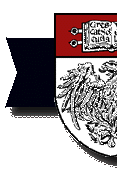I
am a journalist but not a reporter and not a photographer. I am a
picture editor. I have worked with photographers, some of them famous,
others unknown, for more than fifty years. I have sent them out on
assignment, sometimes with a few casual suggestions, other times with
detailed instructions, but always the challenge is the same: Get
the picture. I’ve accompanied photographers on countless stories;
I’ve carried their equipment and held their lights, pointed them in
the right direction if they’ve needed pointing. I’ve seconded their
alibis when things went badly and celebrated with them when things
went well. I have bought and sold their pictures for what must total
millions of dollars. I have hired scores of photographers, and, sadly,
I’ve had to fire a few. I’ve testified for them in court, nursed them
through injury and illness, saved them from eviction, fed them, buried
them. I have accompanied unwed photographers to the marriage license
bureau as their witness. Now I am married to one.
|

July 1944.
Morris left his London desk to join photographers covering
the war in France. In August, Life’s Robert Capa suggested
checking into a hotel on Mont-Saint-Michel and “commuting”
to the front at Saint-Malo, where a German garrison was holding
out. Morris’s curiosity almost cost him dearly: “I photographed
this young German in a lineup of prisoners who had been firing
upon us (barely missing me) only an hour earlier."
|
Photographers
are the most adventurous of journalists. They have to be. Unlike
a reporter, who can piece together a story from a certain distance,
a photographer must get to the scene of the action, whatever
danger or discomfort that implies. A long lens may bring his
subject closer, but nothing must stand between him and reality.
He must absolutely be in the right place at the right time.
No rewrite desk will save him. He must show it as it is. His
editor chooses among those pictures to tell it as it was—or
was it? Right or wrong, the picture is the last word. |
Thus the serious
photojournalist becomes a professional voyeur. Often he hates himself
for it. In 1936, Bob Capa made a picture of a Spanish Republican
soldier, caught in the moment of death. It is one of the most controversial
images of the 20th century. Capa came to hate it. Don McCullin,
the great English photographer who has covered conflict on four
continents, says simply, “I try to eradicate the past.” He is speaking
of how he must deal with what he has seen, because, in fact, he
has done his best to preserve the past. And Eddie Adams, whose Pulitzer
Prize–winning 1968 photograph of the execution of a young Vietcong
prisoner by Saigon’s chief of police is a kind of ghastly updating
of Capa’s image, says only, in his trademark staccato, “I don’t
wanna talk about it.”
The
picture editor is the voyeurs’ voyeur, the person who sees what
the photographers themselves have seen but in the bloodless realm
of contact sheets, proof prints, yellow boxes of slides, and now
pixels on the screen. Picture editors find the representative picture,
the image, that will be seen by others, perhaps around the world.
They are the unwitting (or witting, as the case may be) tastemakers,
the unappointed guardians of morality, the talent brokers and celebrity
makers. Most important—or disturbing—they are the fixers of “reality”
and “history.”—J.G.M.
|



